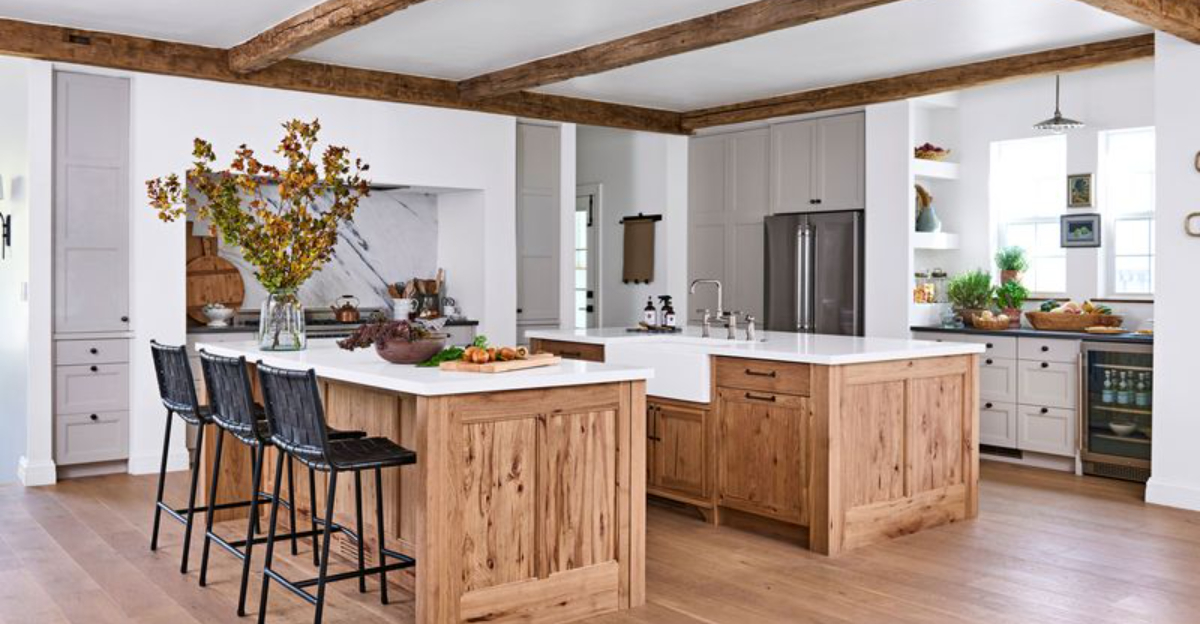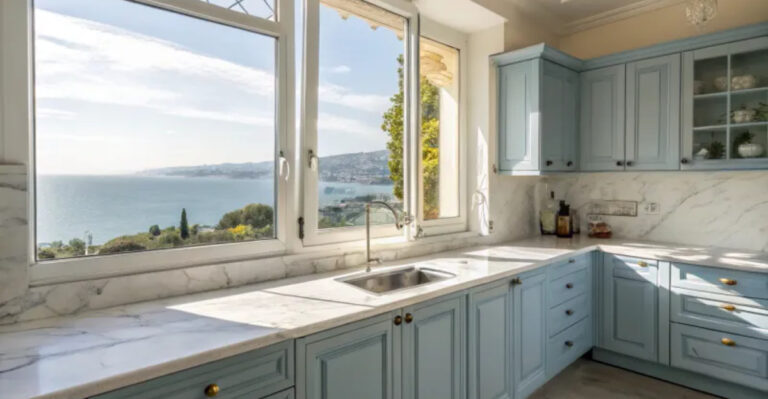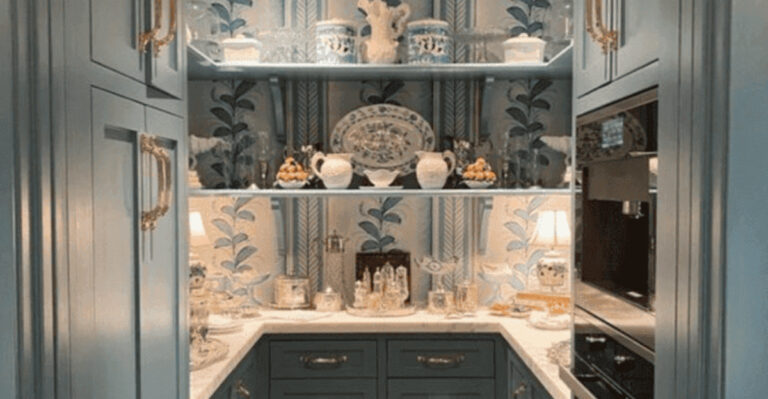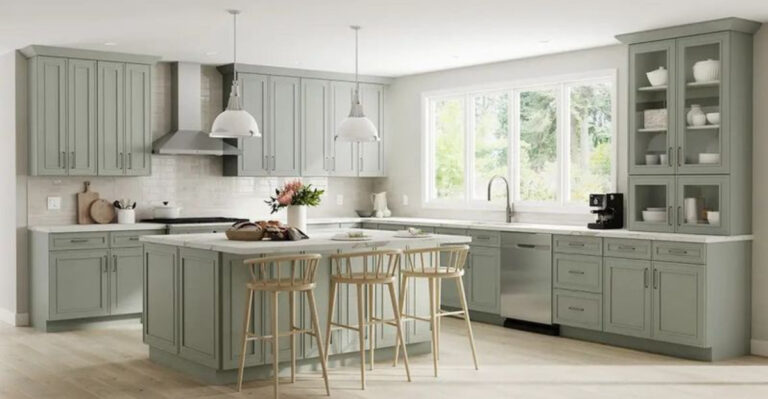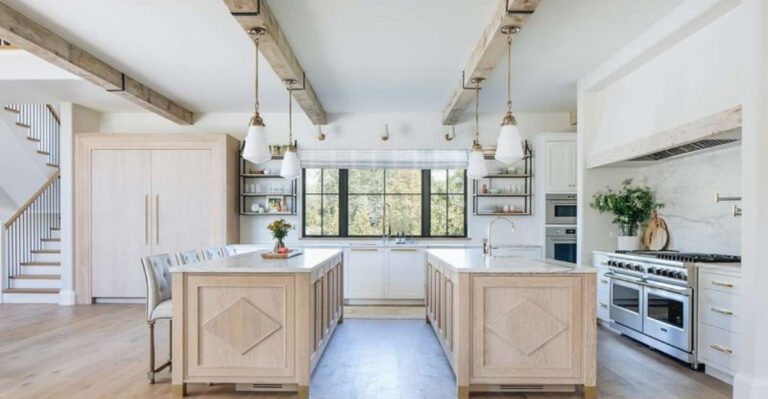Are Two Kitchen Islands Exaggeration? Check Out These 17 Kitchen Designs
I used to think two kitchen islands sounded a bit over-the-top, until I saw how practical (and gorgeous) they can be. Now I totally get the hype.
Double islands actually make cooking, entertaining, and even storing your stuff way easier. One can be for prepping meals while the other becomes a hangout spot or buffet setup.
It’s a game-changer if you have the space. If you’ve ever daydreamed about a dream kitchen that feels both stylish and super functional, these 17 double-island designs might just win you over too.
1. Parallel Paradise
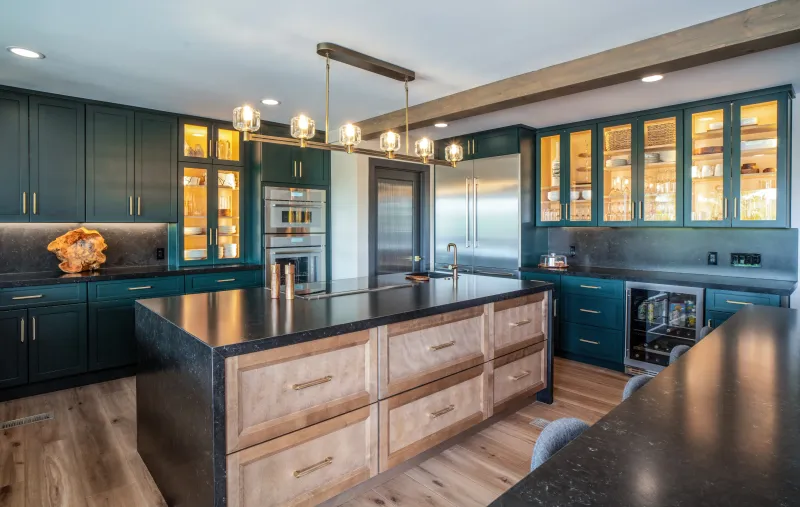
Two matching islands running parallel create a stunning kitchen runway effect. One island typically handles food prep with a sink or cooktop, while the other serves as a dining or buffet area.
Families love this layout because multiple cooks can work without bumping elbows. If you entertain often, guests naturally gather around one island while you prepare food at the other.
2. L-Shaped Logic

Arranging your islands in an L-shape maximizes corner spaces while creating distinct zones. The primary island might house appliances, while the secondary one offers casual seating or a dedicated baking station.
Kids can do homework at one island while parents cook dinner at the other. Sometimes this configuration works better than parallel islands in square-shaped kitchens.
3. Mismatched Magic
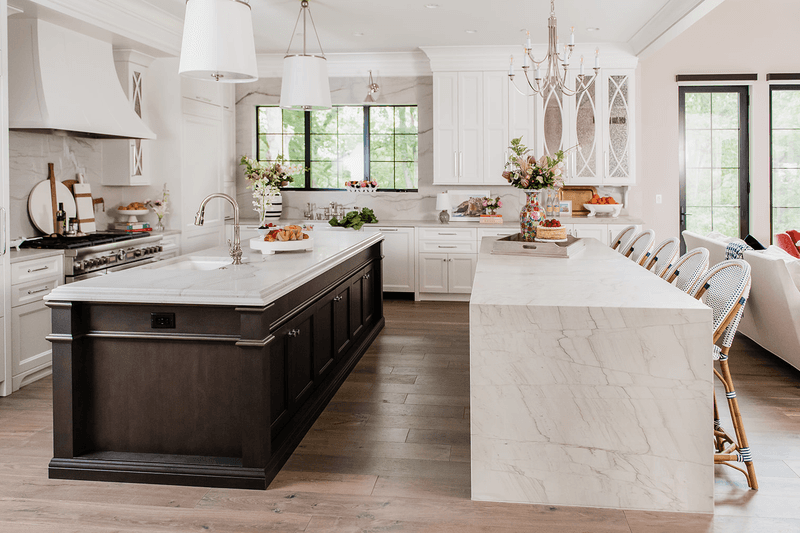
Who says your islands need to match? Playing with different heights, materials, or colors creates visual interest and personality. One could be marble-topped for pastry making while the other features butcher block for chopping.
Your kitchen instantly becomes more dynamic with contrasting elements. Many designers recommend keeping one element consistent (like countertop thickness) to maintain cohesion despite the differences.
4. Waterfall Wonder
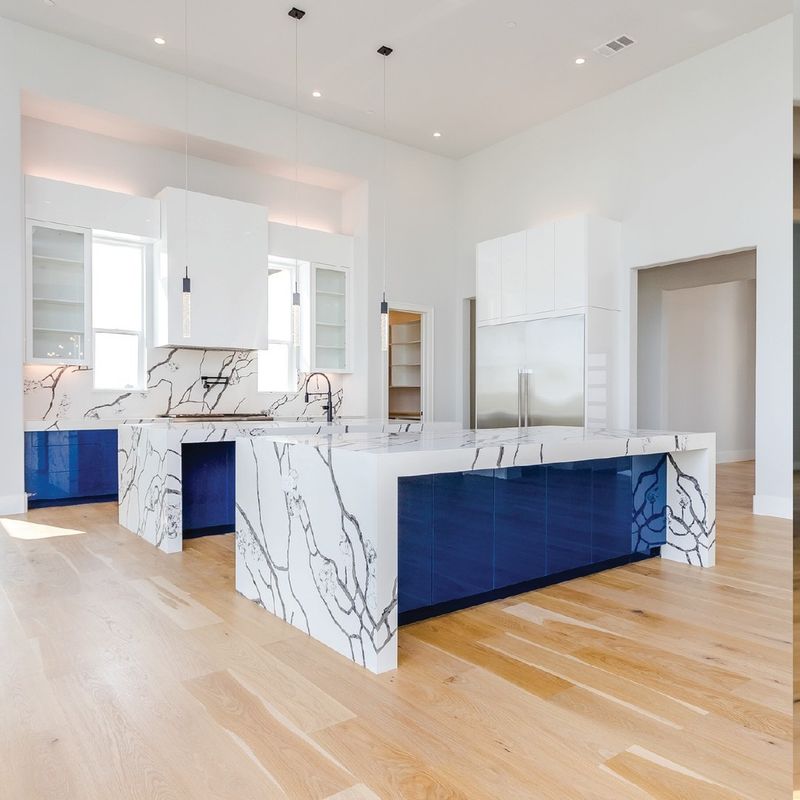
Waterfall edges—where countertop material cascades down the sides—look spectacular on dual islands. This high-end finish creates a sculptural effect that transforms utilitarian pieces into art.
Light bounces beautifully off these smooth vertical surfaces. If budget allows, consider book-matching the stone patterns at the edges for a truly luxurious touch that will have guests doing double-takes.
5. Floating Furniture Feel
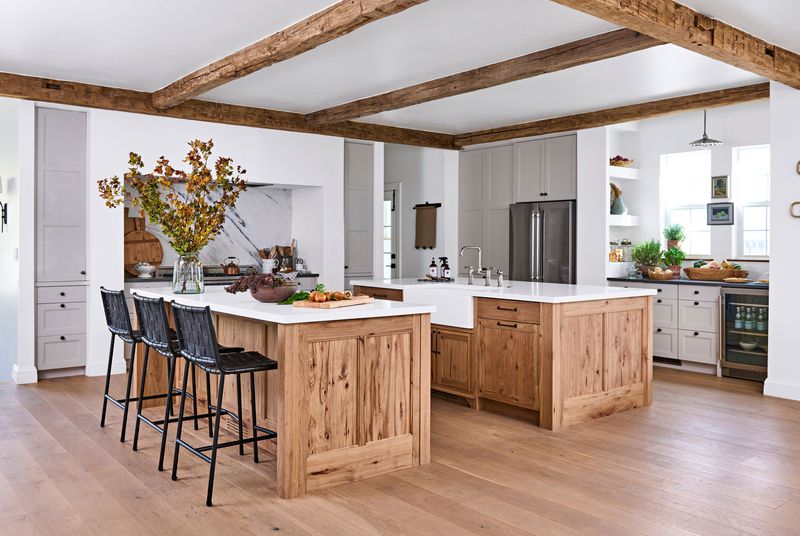
Islands that look like furniture pieces rather than built-ins bring warmth and character to kitchens. Think turned legs, open shelving, or antique table bases repurposed as island foundations.
This approach works especially well in farmhouse or traditional homes. One island might feature a distressed finish while its partner showcases painted beadboard, creating a collected-over-time appearance that feels authentically yours.
6. Round And Rectangular Combo

Breaking away from the expected rectangular shape, a round or oval island paired with a traditional rectangular one creates wonderful flow. The curved island eliminates sharp corners—perfect for homes with small children.
Guests naturally gather around circular shapes for conversation. The combination feels less rigid than two identical rectangles and can help a large kitchen feel more intimate and inviting.
7. Connected Countertops
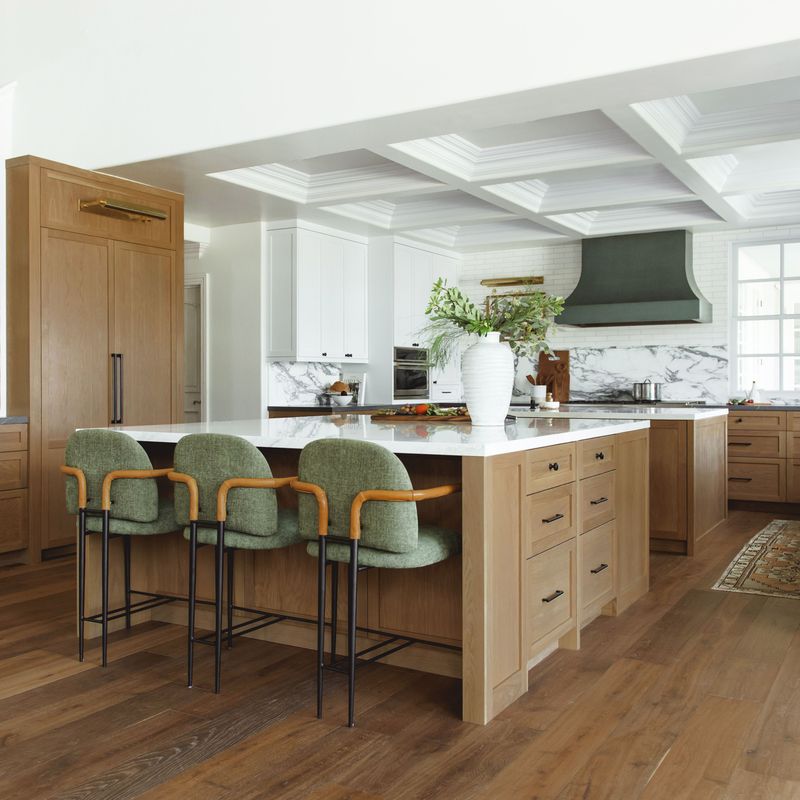
Sometimes what appears to be two islands is actually one large island with a walkway cut through the middle. This design maintains the functionality of separate workstations while creating a cohesive look.
The connecting element might be a lower shelf or a partial countertop. Storage opportunities multiply with this approach, as both sides of the walkway can feature cabinets or drawers for maximum organization.
8. Multi-Level Marvels
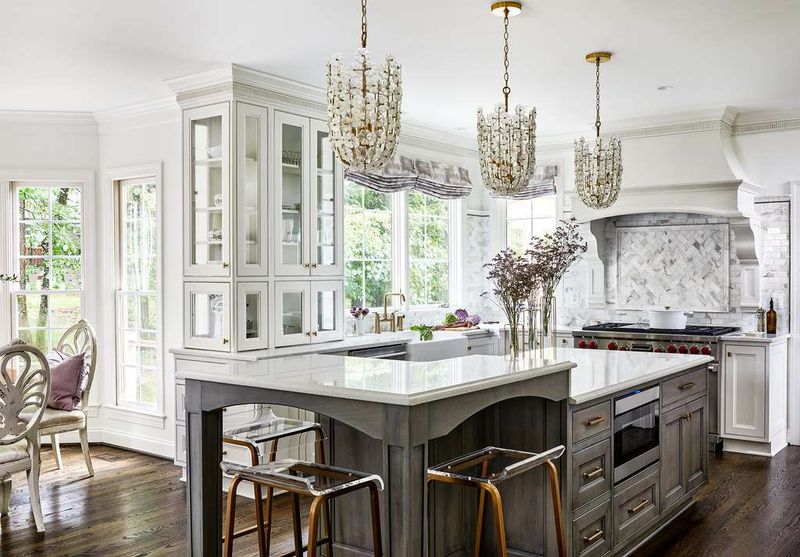
Playing with height creates distinct zones within your kitchen landscape. A lower island works perfectly for rolling pastry or kids’ activities, while a higher one serves as a casual dining spot or standing workstation.
Varying heights also helps break up visual monotony in large spaces. For wheelchair users or multi-generational homes, this approach offers accessibility benefits that standard-height islands can’t match.
9. Entertainment Experts
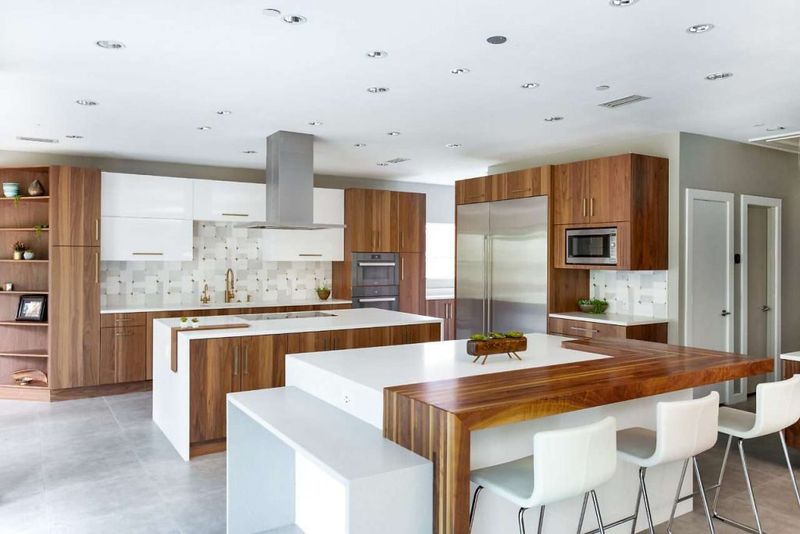
For serious entertainers, dedicating one island entirely to hosting elevates the party experience. Imagine one island equipped with a wine fridge, ice maker, and glassware storage, while the other handles cooking duties.
Guests can mix drinks without interrupting the chef’s workflow. Some homeowners even include a small sink in the entertainment island for quick glass rinsing or cocktail preparation.
10. Hidden Appliance Havens
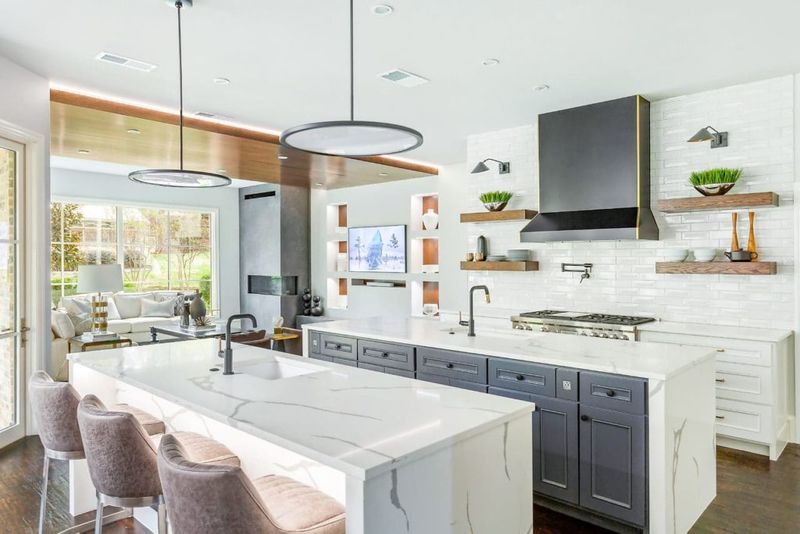
Concealing appliances within islands creates a cleaner, more streamlined look. One island might house a microwave drawer and dishwasher, while the other contains refrigerator drawers or a warming drawer.
This approach minimizes visual clutter along walls. For those who dislike seeing appliances, this solution preserves the kitchen’s aesthetic while maintaining full functionality and convenient access exactly where you need it.
11. Mobile And Fixed Combination
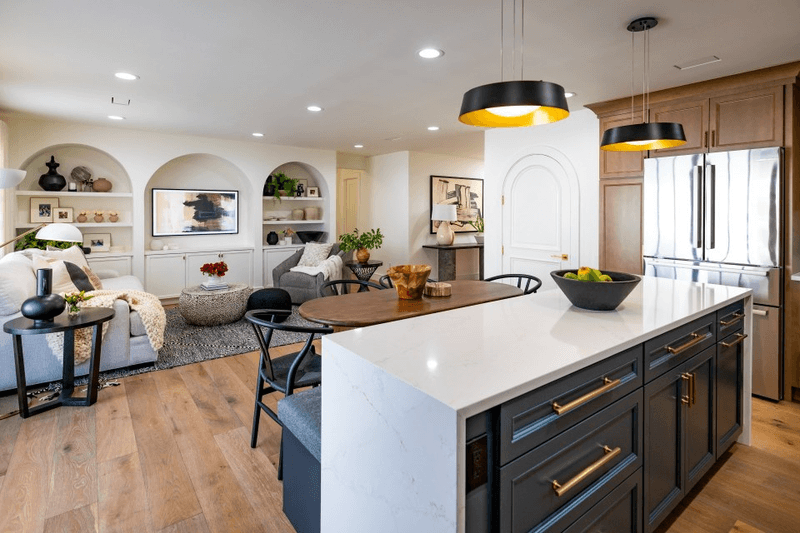
Pairing one permanent island with one movable island offers incredible flexibility. Roll the mobile unit wherever needed—next to the fixed island for major cooking projects or against a wall when hosting large gatherings.
Casters with locks ensure stability when in use. This approach works beautifully in kitchens that need to adapt to different scenarios, from intimate family dinners to large holiday feasts.
12. Specialized Work Stations
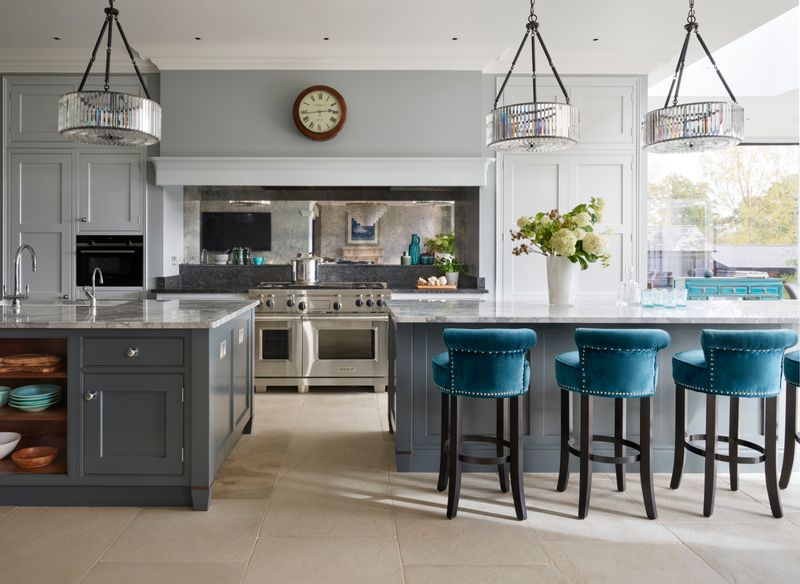
Designating each island for specific tasks creates culinary efficiency. One might feature a lowered section for baking with marble countertops and nearby ovens, while the other focuses on meal prep with a sink and cutting board.
Serious cooks appreciate this task-oriented approach. Families find it allows multiple activities—homework supervision, dinner preparation, and casual dining—to happen simultaneously without conflict.
13. Dramatic Size Difference

Playing with dramatically different island sizes creates visual hierarchy and practical advantages. A dominant main island might handle everyday cooking, while a smaller satellite island serves specific purposes like morning coffee station or kids’ snack area.
The size variation prevents the kitchen from feeling too symmetrical or rigid. Small secondary islands work particularly well for quick access to frequently used items without crossing the entire kitchen.
14. Indoor-Outdoor Connection
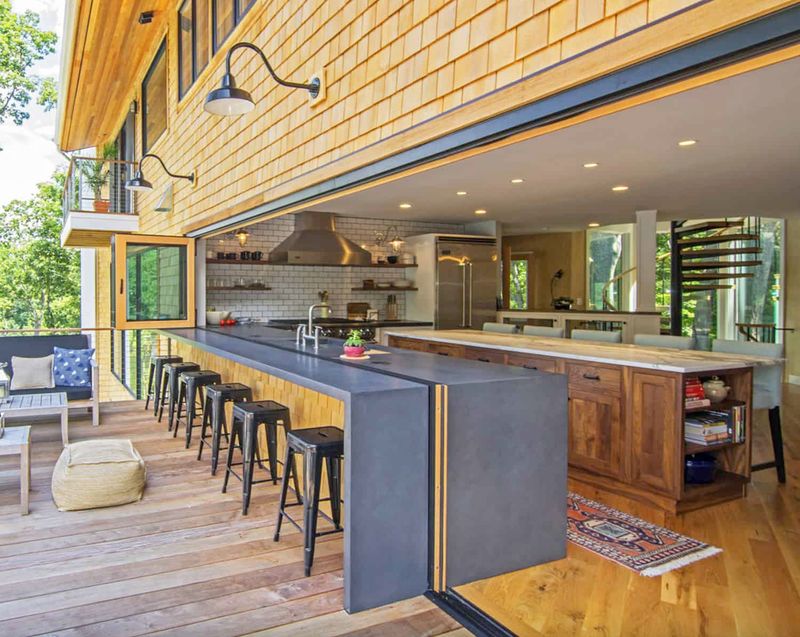
Positioning one island near exterior doors creates a smooth transition between indoor and outdoor entertaining spaces. This island might feature serving ware storage and counter space for plating food headed to the patio.
Meanwhile, the interior island focuses on cooking functions. During summer gatherings, this arrangement creates natural flow between spaces and prevents bottlenecks as people move between indoor and outdoor areas.
15. Clever Corner Solution
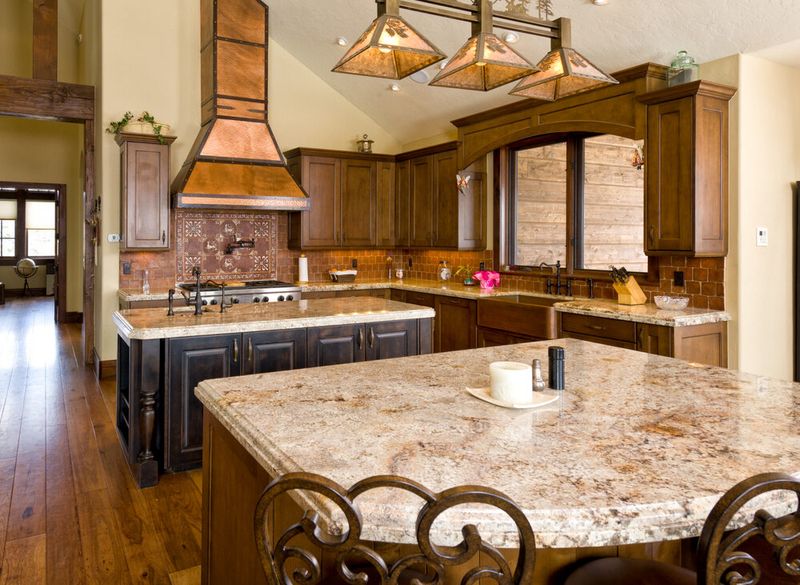
For L-shaped kitchens, positioning two islands to form a corner creates an efficient work triangle. This arrangement maximizes space in kitchens where a single large island wouldn’t fit properly.
The corner configuration naturally creates distinct zones. Many homeowners find this layout creates a cozier, more intimate feeling than parallel islands while still providing the benefits of multiple work surfaces.
16. Glass Element Glamour

Incorporating glass elements into one island creates ethereal beauty and visual lightness. Glass waterfall ends, display cases, or illuminated panels prevent two substantial islands from feeling heavy or overwhelming.
LED lighting behind frosted glass adds evening ambiance. While one island remains solidly practical with standard cabinetry, its glass-featured partner becomes a showstopping focal point that makes the kitchen feel special.
17. Vintage Meets Modern
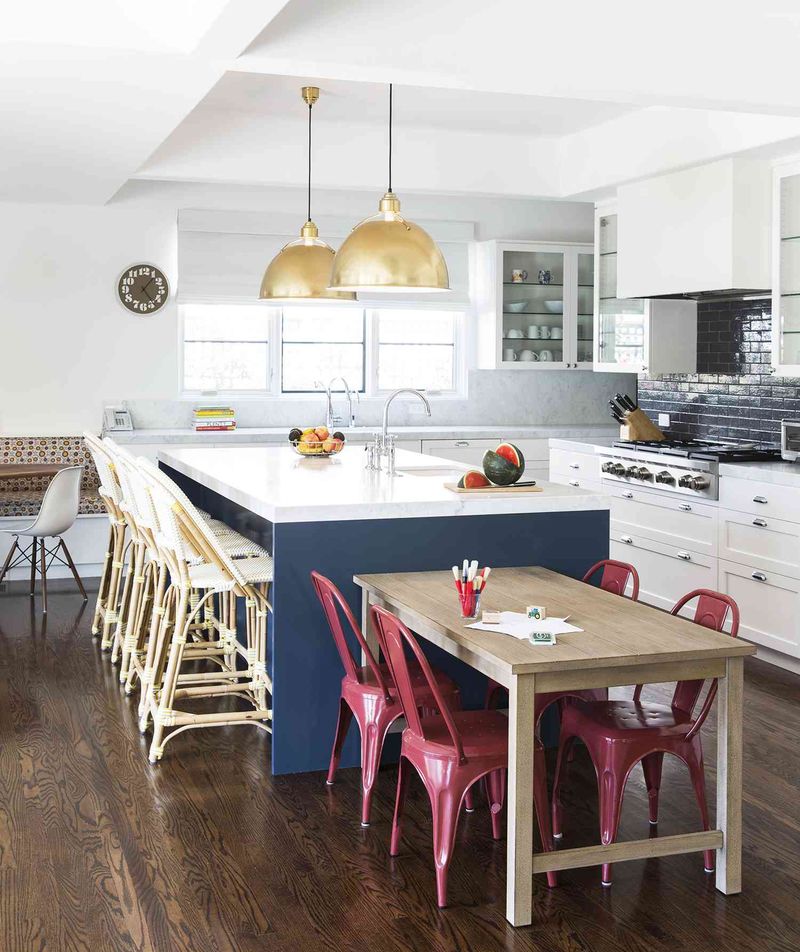
Combining one contemporary island with one vintage piece creates fascinating tension between old and new. An antique workbench or baker’s table paired with a sleek, modern island brings character that all-new kitchens often lack.
The vintage piece tells a story and adds soul. This approach works especially well in renovated older homes where honoring architectural history while embracing modern function creates a thoughtfully layered design.

